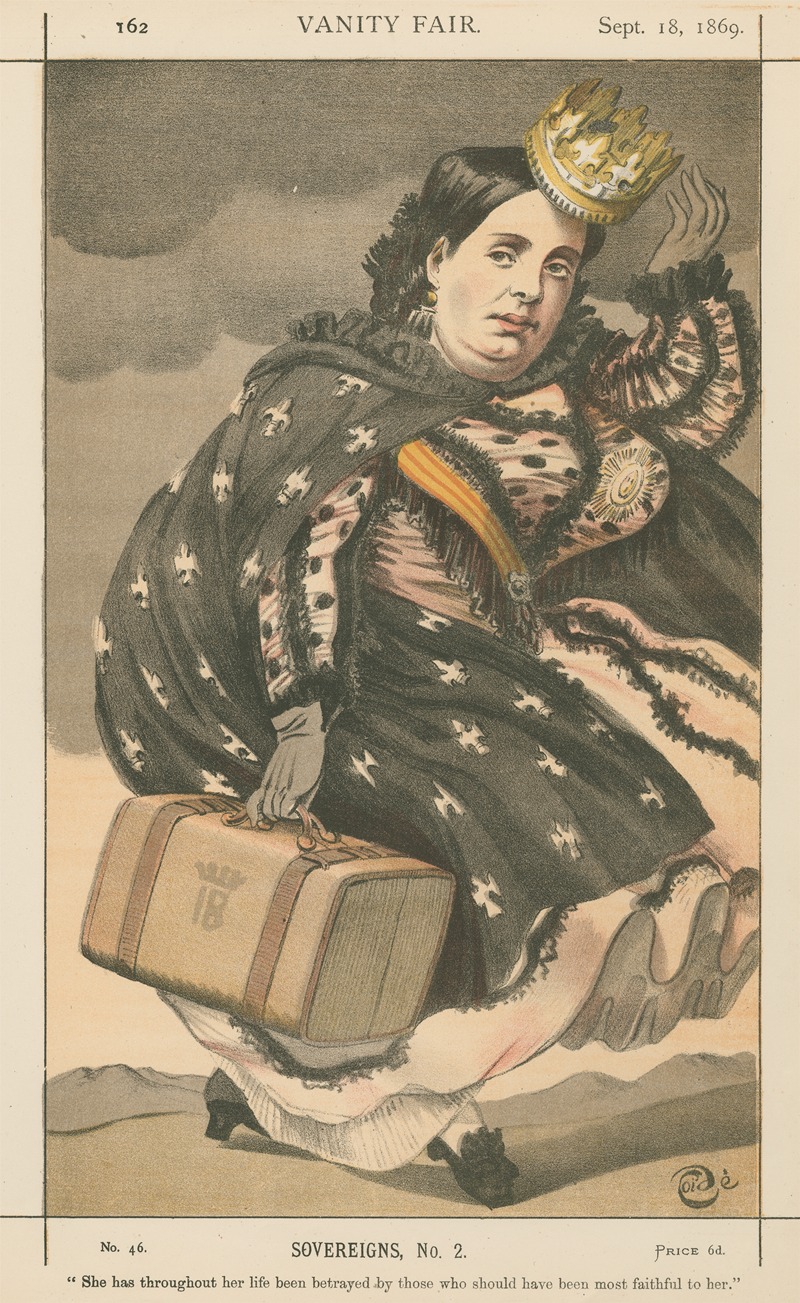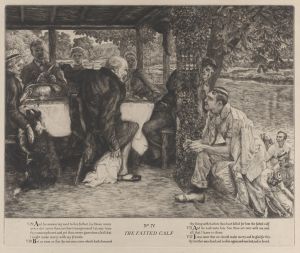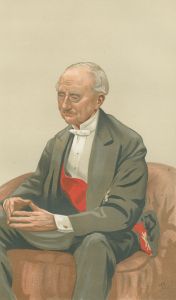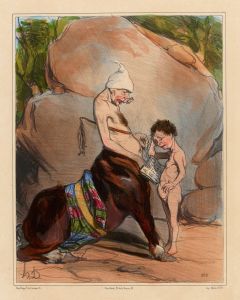
Vanity Fair; Royalty; ‘She has Throughout her Life been Betrayed by those who Should have been Most Faithful to Her’, Isabella II, Queen of Spain, September 28, 1869
A hand-painted replica of James Tissot’s masterpiece Vanity Fair; Royalty; ‘She has Throughout her Life been Betrayed by those who Should have been Most Faithful to Her’, Isabella II, Queen of Spain, September 28, 1869, meticulously crafted by professional artists to capture the true essence of the original. Each piece is created with museum-quality canvas and rare mineral pigments, carefully painted by experienced artists with delicate brushstrokes and rich, layered colors to perfectly recreate the texture of the original artwork. Unlike machine-printed reproductions, this hand-painted version brings the painting to life, infused with the artist’s emotions and skill in every stroke. Whether for personal collection or home decoration, it instantly elevates the artistic atmosphere of any space.
James Tissot's painting, "Vanity Fair; Royalty; ‘She has Throughout her Life been Betrayed by those who Should have been Most Faithful to Her’, Isabella II, Queen of Spain, September 28, 1869," is a notable work that captures the complex and tumultuous life of Isabella II of Spain. This painting is part of a series of caricatures published in the British magazine Vanity Fair, which was known for its satirical portraits of public figures.
Isabella II was born on October 10, 1830, in Madrid, Spain, and became queen at the tender age of three, following the death of her father, King Ferdinand VII. Her reign was marked by political instability, court intrigues, and a series of betrayals by those closest to her. The title of Tissot's work reflects this aspect of her life, highlighting the theme of betrayal by those who were expected to be loyal.
The painting was created during a period of significant upheaval in Spain. In 1868, a revolution known as "La Gloriosa" led to Isabella's deposition and exile. The revolution was fueled by widespread dissatisfaction with her rule, which was characterized by political corruption, economic difficulties, and social unrest. Her inability to effectively manage the affairs of state and her reliance on unpopular advisors contributed to her downfall.
Tissot's depiction of Isabella II is both a reflection of her personal struggles and a commentary on her political challenges. The painting portrays her in a regal yet vulnerable manner, capturing the dichotomy of her position as a monarch who was both powerful and powerless. The subtitle of the painting, "She has Throughout her Life been Betrayed by those who Should have been Most Faithful to Her," underscores the personal and political betrayals that defined her reign.
James Tissot, a French painter and illustrator, was known for his detailed and often satirical portraits. His work for Vanity Fair allowed him to explore the personalities and politics of his time through a unique lens. Tissot's ability to capture the essence of his subjects made his contributions to the magazine highly regarded.
The painting of Isabella II is significant not only for its artistic merit but also for its historical context. It serves as a visual representation of a queen who faced immense challenges and whose life was shaped by the actions of those around her. The work remains an important piece for understanding the complexities of Isabella II's reign and the broader political landscape of 19th-century Spain.
In summary, James Tissot's painting of Isabella II for Vanity Fair is a poignant portrayal of a queen beset by betrayal and political turmoil. It reflects the historical realities of her reign and offers insight into the personal and political dynamics that influenced her life. Through his art, Tissot provides a window into the challenges faced by one of Spain's most enigmatic monarchs.












![The Commader in Chief in India [General Sir Frederick Paul Haines], Military and Navy, from Vanity Fair, March 25, 1876](/imgs/214448/s/james-tissot-the-commader-in-chief-in-india-general-sir-frederick-paul-haines-military-and-navy-from-vanity-fair-march-25-1876-18a8ea9e.jpg)





